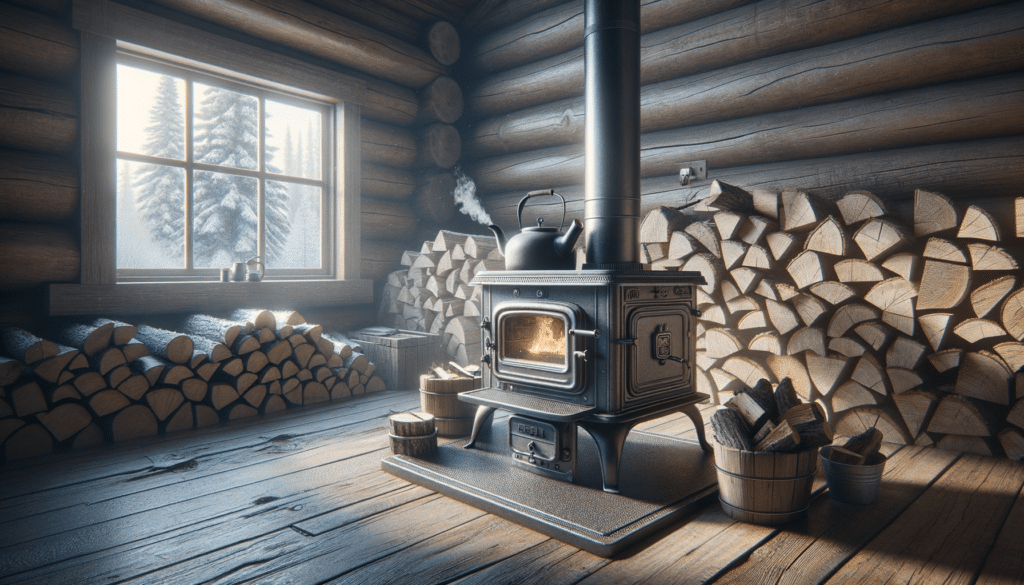Introduction to Wood Stoves for Winter Preparation
As winter approaches, many homeowners begin to consider their heating options. Among the various choices, wood-burning stoves stand out for their reliability and efficiency. These stoves not only provide warmth but also add a rustic charm to any setting. The simplicity of using wood as a fuel source makes it an attractive option for those looking to prepare for the colder months. By understanding the benefits and functionalities of wood stoves, you can make an informed decision about incorporating this traditional heating method into your winter preparation plans.
Wood stoves are particularly appealing in areas prone to power outages. When the grid falters under the weight of heavy snow or ice, a wood stove can be a lifesaver, offering a consistent heat source. Moreover, the availability of wood in many regions makes it a practical and sustainable choice. As we delve deeper into the benefits and uses of wood stoves, you’ll discover why they remain a preferred option for many during winter.
Off-Grid Wood Heating: A Sustainable Choice
For those seeking a more self-sufficient lifestyle, off-grid wood heating provides an excellent solution. It allows individuals to rely less on conventional energy sources and more on natural, renewable resources. This approach not only reduces dependency on the grid but also promotes environmental sustainability. By using wood as a primary heat source, you can significantly cut down on fossil fuel consumption and reduce your carbon footprint.
The process of off-grid wood heating involves sourcing, chopping, and storing wood, which can be a fulfilling and rewarding task. It encourages a connection with nature and a deeper understanding of the resources we use daily. Additionally, advancements in wood stove technology have made them more efficient and easier to use. Modern stoves are designed to burn wood more completely, reducing emissions and maximizing heat output.
Choosing off-grid wood heating means embracing a lifestyle that values independence and environmental consciousness. It’s a commitment to living in harmony with nature while ensuring comfort and warmth throughout the winter months.
Using Wood Stoves Safely
Safety is paramount when using wood stoves, as improper use can lead to dangerous situations. Fortunately, following a few simple guidelines can ensure your wood stove is both effective and safe. First and foremost, it’s crucial to have your stove installed by a professional. Proper installation ensures that the stove operates efficiently and minimizes the risk of fire hazards.
Regular maintenance is also essential. This includes cleaning the chimney to prevent creosote buildup, which can ignite and cause chimney fires. Additionally, using the right type of wood is important. Seasoned hardwoods, such as oak and maple, burn cleaner and produce more heat than softwoods. Avoid using treated or painted wood, as these can release harmful chemicals when burned.
To further enhance safety, consider installing smoke and carbon monoxide detectors in your home. These devices provide an early warning in case of a malfunction or buildup of dangerous gases. By adhering to these safety measures, you can enjoy the warmth and ambiance of a wood stove without compromising on safety.
The Economic Benefits of Wood Stoves
Wood stoves offer significant economic advantages, making them an attractive option for budget-conscious homeowners. The cost of wood is generally lower than other heating fuels, and in some areas, it can even be sourced for free. This makes wood stoves a cost-effective solution for heating your home during winter.
In addition to lower fuel costs, wood stoves can also reduce your overall heating expenses. By using a wood stove as a primary or supplementary heat source, you can decrease your reliance on expensive electricity or gas. This can lead to substantial savings on your energy bills over time.
Moreover, investing in a wood stove can increase the value of your property. Many homebuyers appreciate the charm and practicality of a wood stove, making it a desirable feature in the real estate market. By choosing a wood stove, you not only save money but also enhance the appeal and value of your home.
Conclusion: Embracing the Warmth of Wood Stoves
In conclusion, wood-burning stoves offer a blend of practicality, sustainability, and economic benefits that make them a valuable addition to any home. Whether you’re preparing for winter, living off-grid, or simply looking to reduce your energy costs, a wood stove can meet your needs effectively. By understanding how to use and maintain your stove safely, you can enjoy its warmth and ambiance throughout the colder months.
As we continue to seek sustainable and reliable energy solutions, wood stoves remain a timeless choice. They embody a connection to nature and a commitment to self-sufficiency, offering a comforting and dependable heat source when it’s needed most. Embrace the warmth and charm of wood stoves, and let them be a cornerstone of your winter preparedness strategy.


